As responsible pet owners, it’s essential to understand the importance of normal testicular descent in male dogs. Whether you’re a new puppy owner or simply curious about this aspect of canine health, we’re here to provide you with valuable insights and practical tips.
The journey from puppyhood to adulthood involves numerous developmental milestones, and testicle descent is a crucial one for male dogs. The proper positioning of the testicles within the scrotum is not only important for reproductive purposes but also for the overall health and well-being of your furry friend.
In this article, we’ll delve into the factors that influence testicle descent in dogs and discuss various methods to facilitate this process. While it’s important to note that individual dogs may have unique circumstances, we’ll provide general guidelines and expert advice to help you navigate this aspect of canine care.
So, whether you’re seeking to aid your dog’s testicle drop or simply wish to deepen your understanding of this topic, let’s embark on this informative journey together. Let’s explore how you can support your dog’s healthy testicular development and ensure their long-term vitality.
What is Retained Testicle (Cryptorchidism) in Dogs?
Retained testicle, also known as cryptorchidism, is a congenital abnormality in which one or both of a male dog’s testicles do not descend into the scrotum by the age of six months. The testicles of a male dog normally form in the belly and begin to travel down into the scrotum about the eight week of gestation.
His testicles should be in the inguinal canal, which joins the abdomen with the scrotum, by the time he is born. By the time he is two months old, the testicles should have completed their fall into the scrotum.
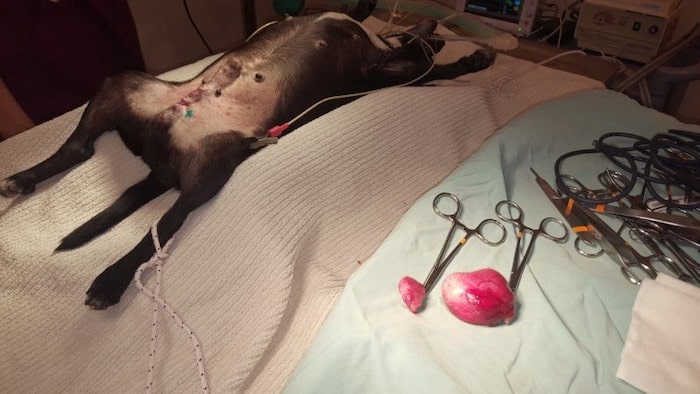
However, one or both testicles may become caught in the belly or the inguinal canal and fail to reach the scrotum in certain situations. This can occur as a result of genetic causes, hormone imbalances, environmental effects, or physical impediments.
Retained testicles can be classified into two types: unilateral (one testicle retained) or bilateral (both testicles retained). Unilateral cryptorchidism is more common than bilateral cryptorchidism.
Causes and Risk Factors of Cryptorchidism in Dogs
The exact cause of cryptorchidism is not fully understood, but it is believed to involve a combination of genetic and environmental factors. The descent of the testicles happens in two stages: the first stage occurs soon after birth or by three weeks of age, when the testicles move from the abdomen to the top of the scrotum; the second stage occurs between six weeks and six months of age, when the testicles move to the bottom of the scrotum.
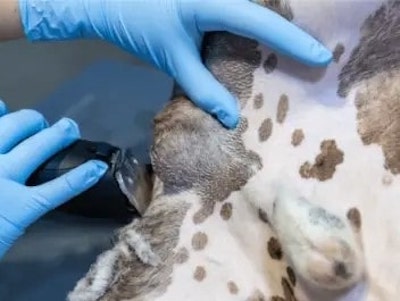
The descent of the testicles is controlled by hormones and other factors that affect the development and growth of the testicles and their surrounding structures. If something interferes with this process, such as hormonal imbalance, infection, injury, or abnormal anatomy, the testicles may not descend properly or at all.
Some risk factors that may increase the likelihood of cryptorchidism in dogs are:
- Premature birth
- Low birth weight
- Exposure to toxins or drugs during pregnancy or lactation
- Trauma or surgery to the abdomen or groin area
- Obesity
- Hypothyroidism
- Diabetes
Treatment Options for Cryptorchidism in Dogs
The only effective treatment for cryptorchidism in dogs is surgery. The surgery involves removing both testicles (even if one has descended normally) from either the scrotum or the abdomen. This is called castration or neutering, and it has several benefits for the dog’s health and well-being:
- It prevents unwanted breeding and overpopulation of dogs.
- It reduces the risk of testicular cancer, which is more common and aggressive in undescended testicles.
- It reduces the risk of testicular torsion, which is a painful condition where the testicle twists on itself and cuts off blood supply.
- It reduces or eliminates unwanted behaviors related to sexual hormones, such as aggression, marking, roaming, mounting, etc.
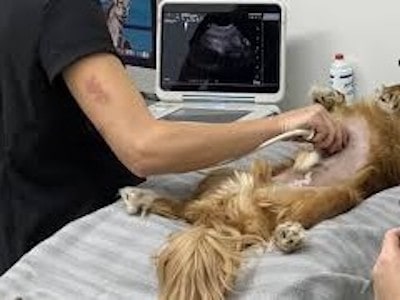
The surgery can be performed at any age, but it is recommended to do it as early as possible, preferably before the dog reaches sexual maturity (around six months of age). This way, the dog will not develop any secondary sexual characteristics or behaviors that may be harder to change later. The surgery is usually done under general anesthesia and requires a few days of recovery and care.
The surgery is generally safe and effective, but like any other procedure, it may have some risks and complications, such as:
- Bleeding
- Infection
- Pain
- Swelling
- Hernia
- Allergic reaction to anesthesia or medication
- Damage to other organs or structures
Complications and Prognosis of Cryptorchidism in Dogs
If left untreated, cryptorchidism can lead to serious health problems for the dog, such as:
1) Testicular cancer: This is the most prevalent and dangerous complication of cryptorchidism. Undescended testicles are more likely to develop malignant tumours than normal testicles. Cancer can spread to other regions of the body, such as the lungs, liver, or bones, and produce life-threatening symptoms.
Testicular cancer risk increases with age and varies according to testicle location. According to a research, the risk of testicular cancer in dogs with abdominal cryptorchidism was 13.6 times greater than in normal dogs, whereas the risk was 2.4 times higher in dogs with inguinal cryptorchidism.
2) Testicular torsion: This is a condition in which the testicle twists on itself, cutting off the blood flow. This can result in extreme discomfort, edoema, inflammation, and testicular necrosis (death). Torsion of the testicles can occur naturally or as a result of trauma or illness. To preserve or remove the testicle, prompt veterinarian care and surgery are required.
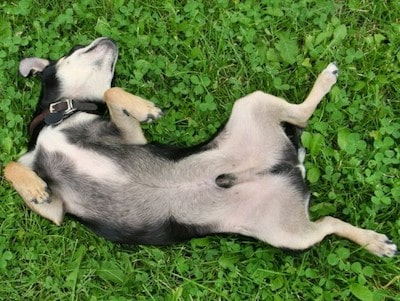
3) Infertility: Cryptorchidism can impair a dog’s fertility and capacity to reproduce. Testicles that have not descended are frequently smaller and less functioning than normal testicles. They generate less sperm and testosterone, both of which are required for reproduction.
They may also have abnormal sperm morphology (shape) and motility (movement), which can reduce their chances of fertilizing an egg. Furthermore, cryptorchidism can cause hormonal imbalance and affect the development of other reproductive organs, such as the prostate gland.
The prognosis of cryptorchidism in dogs depends on several factors, such as:
- The age of diagnosis and treatment
- The location and number of undescended testicles
- The presence or absence of complications
- The overall health and condition of the dog
How to Make a Dog’s Testicle Drop Naturally
In some cases, a dog’s testicle may drop naturally without any intervention. This may happen if the testicle is delayed in its descent but not completely blocked or abnormal. However, this is rare and unpredictable, and there is no guarantee that it will happen at all.
There is no proven way to make a dog’s testicle drop naturally, but some people may suggest some home remedies or alternative therapies, such as:
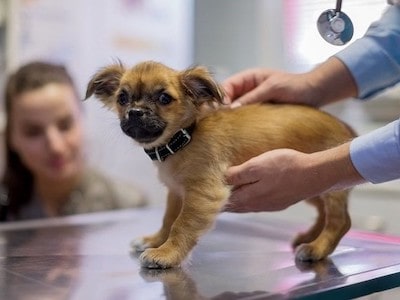
- Massage: This involves gently rubbing or squeezing the scrotum or abdomen to stimulate blood flow and encourage the testicle to move down.
- Heat: This involves applying a warm compress or towel to the scrotum or abdomen to relax the muscles and tissues and facilitate the descent of the testicle.
- Herbs: This involves giving the dog certain herbs or supplements that are supposed to enhance hormonal balance and reproductive function, such as saw palmetto, fenugreek, ginseng, etc.
- Acupuncture: This involves inserting thin needles into specific points on the body to stimulate energy flow and promote healing.
However, there is no scientific evidence that these methods work or are safe for dogs. In fact, they may be harmful or ineffective, especially if they delay proper diagnosis and treatment. Therefore, it is not advisable to rely on these methods or use them without consulting a veterinarian.
FAQs
The timing of testicle descent can vary among individual dogs and breeds. In general, testicles should descend into the scrotum by the time a puppy is around six to eight weeks old. However, in some cases, it may take longer for the testicles to fully drop. If a dog reaches six months of age, and one or both testicles have not descended, it is recommended to consult a veterinarian for further evaluation.
If your dog has reached the age of six months, and one or both testicles have not descended, it is advisable to consult a veterinarian. They can perform a thorough examination to determine the cause and recommend appropriate steps. In some cases, surgical intervention, such as an orchidopexy, may be necessary to bring the undescended testicle(s) into the scrotum and prevent potential health issues.
No, testicle descent in dogs is typically not a painful process. It occurs naturally as part of the puppy’s development. However, if your dog shows signs of discomfort, pain, or exhibits unusual behavior related to the scrotal area, it is best to consult a veterinarian for a thorough examination and appropriate medical advice.
Neutering or castration, which involves the surgical removal of the testicles, is not a solution for promoting testicle descent. In fact, if a dog has undescended testicles, surgical intervention is necessary to remove them properly. Neutering is a separate procedure and is typically performed to prevent
Conclusion
In conclusion, understanding and promoting testicle descent in male dogs is an important aspect of responsible pet ownership. By ensuring that your dog’s testicles properly drop into the scrotum, you are supporting their reproductive health, fertility, and overall well-being.
While testicle descent is primarily influenced by genetic and hormonal factors, there are steps you can take to facilitate the process. Regular exercise, providing a suitable environment, and maintaining proper temperature control can potentially aid in testicle descent.
However, it’s crucial to remember that individual dogs and breeds may have unique circumstances, and consulting with a veterinarian is always recommended.
If you notice that your dog’s testicles have not dropped by the age of six months, it is important to seek veterinary advice. Undescended testicles, known as cryptorchidism, can lead to complications such as tumors and fertility issues.
A veterinarian can provide a thorough examination, diagnose any underlying issues, and recommend appropriate treatment options, including surgical intervention if necessary.

Ellis is a retired veterinary technician and full-time contributor at DogLovesBest. He likes writing about pet health care tips and reviews the products that are useful for fidos on a daily basis.
Ellis also guardians a Siberian husky, Nova, and a cat named Shilly. They all live happily with his wife Ammy, and both the dogs on a seaside apartment in Queens, NY.
